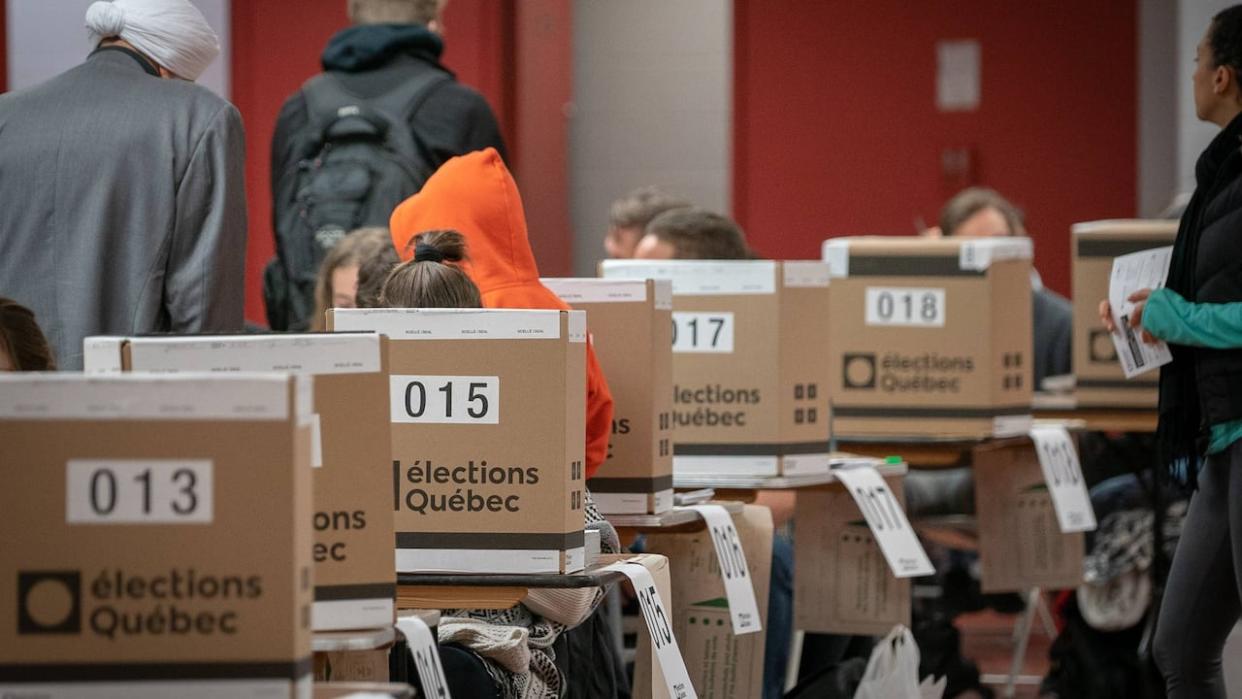Proposed changes to Quebec's electoral map include nixing 1 Montreal riding

A provincial riding in Montreal and another in the Gaspé should be nixed while two new ridings should be established in the Laurentides and Centre-du-Québec regions.
These potential riding changes are among those proposed by Quebec's commission on electoral representation in a comprehensive, 173-page report that was tabled in the National Assembly on Tuesday afternoon.
The proposed changes are aimed at ensuring all ridings in Quebec have roughly the same number of voters — none of them having 25 per cent more, or less, than the average.
Recent demographic changes saw the number of eligible voters increase in some ridings and decrease in others, forcing a change to some ridings.
The report recommends altering the boundaries of 55 constituencies across the province.
In Montreal, Anjou–Louis-Riel, one of only two Coalition Avenir Québec (CAQ) constituencies on the island, would cease to exist. The CAQ took the Liberal stronghold in the 2022 general election.
This change results from various adjustments to the constituency boundaries in the eastern part of the city, including one that would amputate the Longue-Pointe sector from — and add Anjou to — Camille-Laurin riding, which is currently held by PQ Leader Paul St-Pierre Plamondon.
Plamondon reacted on X (formerly known as Twitter) this afternoon, saying he was appalled and surprised to learn of the proposal, which he said does not take into account the specific realities of his constituents.
If approved, the modifications in Montreal would also lead to the renaming of the Rosemont constituency, which would be known as Rosemont–Louis-Riel if the proposal is approved.
Currently, no single Montreal riding has 25 per cent less than the average number of Quebec voters, but several are close, including Viau (-21.22 per cent), Hochelaga-Maisonneuve (-20 per cent), Pointe-aux-Trembles (-19.85 per cent), Sainte-Marie-Saint-Jacques (-18.60 per cent) and Anjou-Louis-Riel (-17.22 per cent), all located in the eastern part of the island.
In eastern Quebec, the Gaspé and Bonaventure constituencies would merge. However, the regional county municipality of Haute-Gaspésie would be incorporated into the Matane-Matapédia constituency in the Lower St. Lawrence region.
In exchange, two new constituencies would be created: Bellefeuille in the Laurentians and Marie-Lacoste-Gérin-Lajoie in the Centre-du-Québec region.
Additionally, the Johnson constituency, which includes Saint-Hyacinthe, would be renamed Daniel-Johnson, after Daniel Johnson Sr., the Union Nationale premier from 1966-68. The Drummondville area, which has experienced strong population growth, would get a new riding, Marie-Lacoste-Gérin-Lajoie.
Special status would be granted to five constituencies (Abitibi-Est, Abitibi-Ouest, Duplessis, René-Lévesque, and Ungava) because of their low populations, in addition to the constituency of Îles-de-la-Madeleine, whose existence is guaranteed by law.
Five regions would maintain their current boundaries: Abitibi-Témiscamingue, Chaudière-Appalaches, Côte-Nord, Mauricie, and Nord-du-Québec.
The preliminary report of the commission will undergo public consultations from Oct. 10 to Nov. 15. These consultations will lead to a revised report and ultimately a final report. The entire process is expected to span several years.
This process happens every second general election — approximately every eight years. The idea is "to prevent inequalities from becoming too great," said Louis Massicotte, a retired professor of political science at Université Laval.


